With Summer Approaching, the Roads Will Be Busy – But Is Your State a Hot Weather Accident Hotspot?
The increasingly sunny weather is great news for summer vibes – and bad news for motorists. More vacations means more travel – and that means more accidents.
In this study we’ll look at how dangerous U.S. roads can become during the summer months, which parts of the country are accident hotspots, why so many accidents occur, and measures all drivers can take to keep the accident numbers down.
Dangerous Summer Traffic and the “100 Deadliest Days”
National Highway Traffic Safety Administration (NHTSA) data tells us that, in 2023, 2.44 million people were injured on American roads – a 2.5% rise in 2022 numbers (2.38 million).
Fatalities were down slightly on 2022 figures, but 40,901 still died due to road accidents – 12,429 due to alcohol-related crashes, and 11,775 due to speeding.
Study data also confirms the South as the nation’s road fatality hotspot, with over half of the yearly traffic deaths occurring on its roads (21,514). The West (11,201) and Midwest (9,449) are also notably dangerous regions, with the Northeast’s roads significantly less dangerous, but still accounting for a lot (4,737) of road fatalities. In each region, the likelihood of a road accident or fatality markedly increases during the summer.
Summertime means hot weather, outdoor fun, and vacations – and lots of cars moving across the country. NHTSA data suggests that there are 20% more miles traveled during the summer period – mid-June to September.
So, more traffic on the road, summer vibes, and soaring temperatures – and the most popular time for teens and young adults to get their driver’s licenses. It’s easy to appreciate why this window is commonly referred to as the ‘100 deadliest days’.
National Road Safety Foundation data shows that during the period between Memorial Day and Labor Day, teen drivers are 20% more likely to be involved in a fatal car accident. The main causes in such cases, beyond inherent inexperience, include speeding, intoxicated driving, and distracted driving.
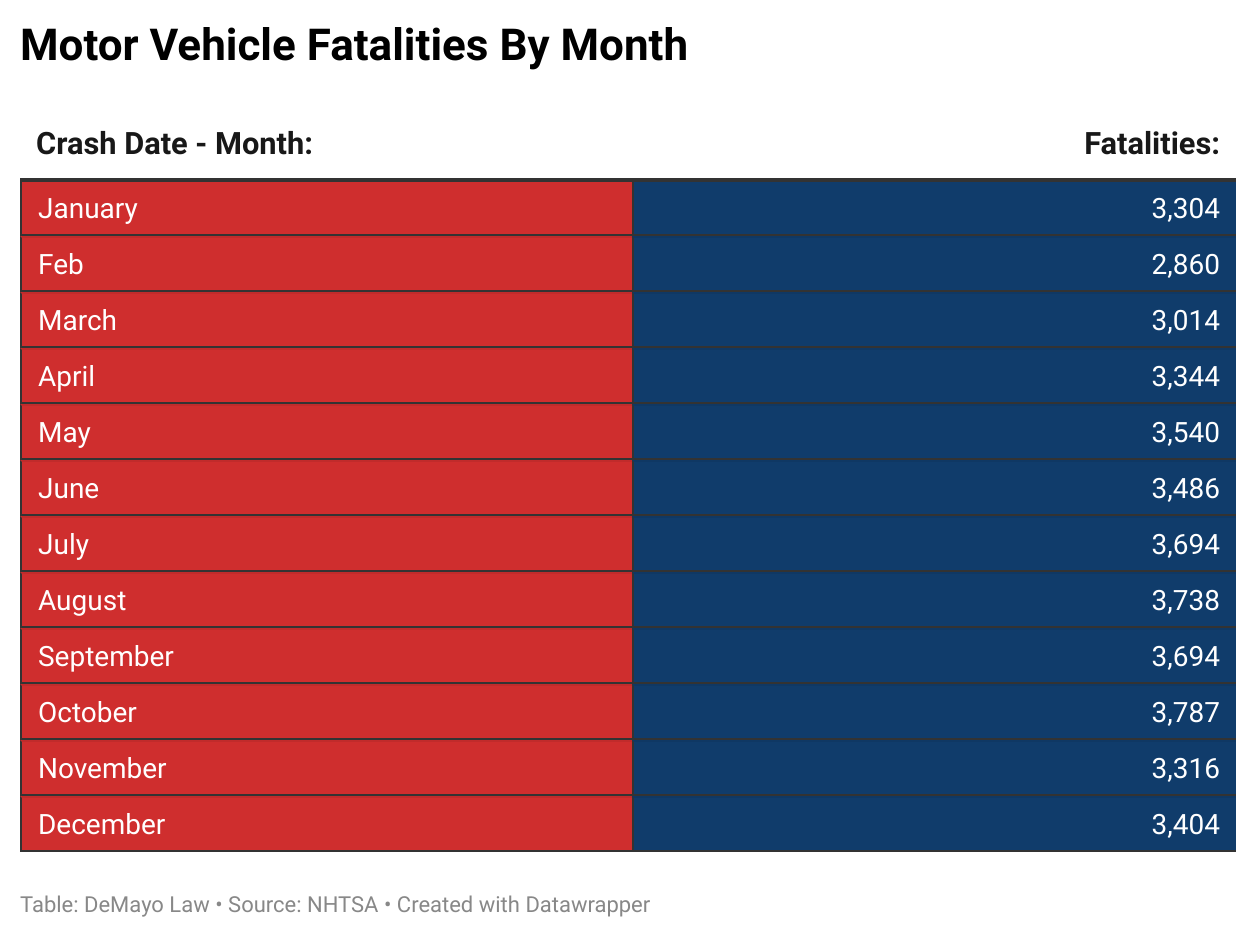
The Deadliest Traffic Months of the Year
The most dangerous region in the U.S. is also the hottest region during the summer – with study data putting average temperatures in the South somewhere between 80 and 85ºF (and top temperatures pushing north of 100ºF).
Across the West, average summer temperatures are in the high 70ºs; Midwest summer temperatures are a little lower, in the mid 70ºs, with Northeast average summer temperatures in the low 70ºs.
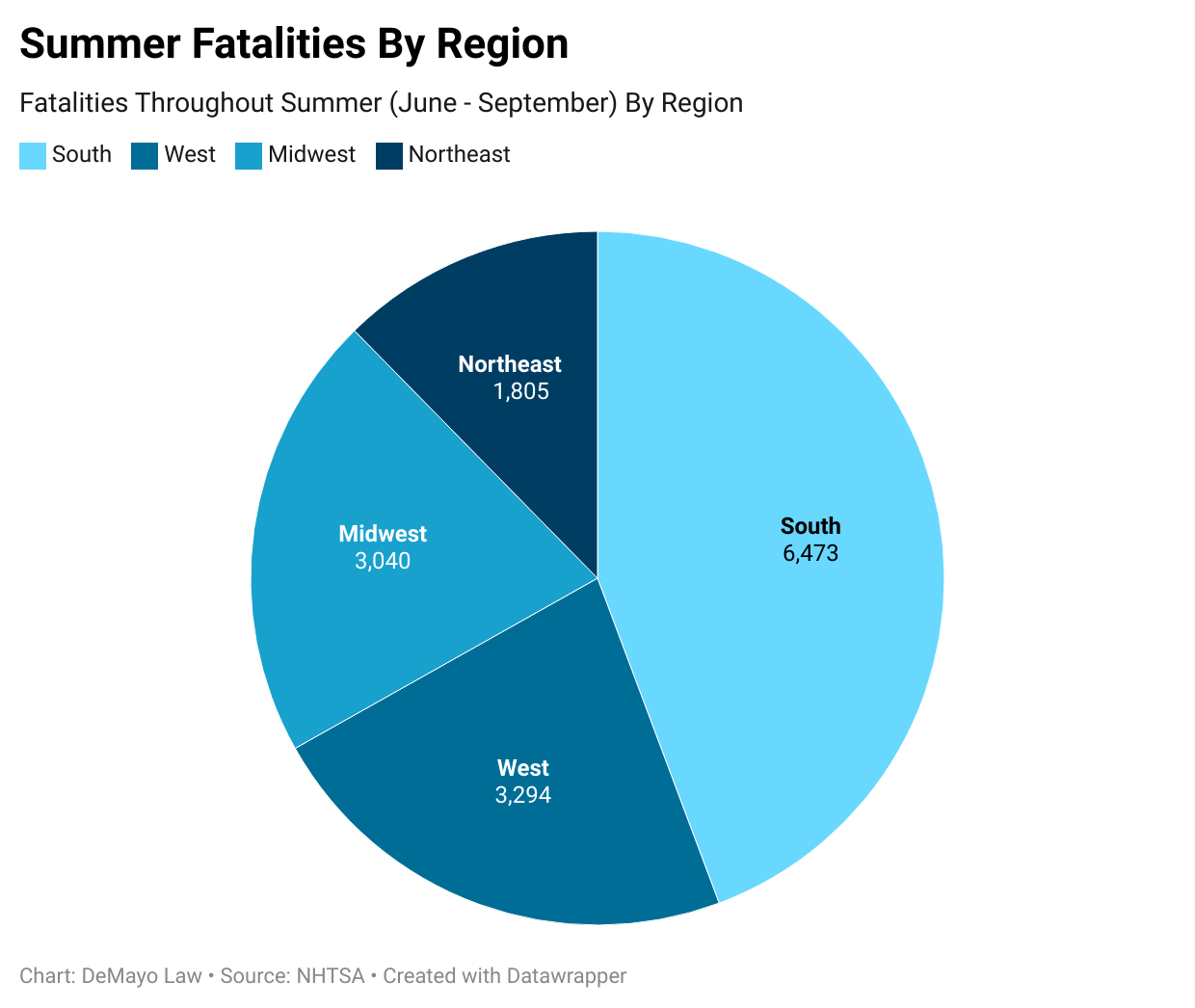
As study data reveals, the hottest region suffered the highest number of motor vehicle fatalities (6,473) during its hottest period – between June and September.
But the likelihood of accidents during such periods is about more than just traffic volume and summertime busyness. In part, it’s about the science behind driving in debilitating conditions.
Driving in the heat is not just about discomfort and distraction. It’s also about the rapid onset of fatigue among drivers enduring intolerable conditions over long periods. If you’re driving in hot temperatures – particularly if you don’t have a working aircon system – you’re much more likely to suffer from dehydration and heat exhaustion.
Our analysis of key study data tells us that a driver’s ability to concentrate and retain quick reactions on the road is sorely hampered by hot weather.
How Extreme Heat Affects Driving
If a driver is dehydrated – which can happen rapidly in soaring temperatures – they’re less cognitively functional and reactive, a problem that directly causes car crashes. Prolonged exposure to heat and burgeoning dehydration also cause a driver to become drowsy, with dangerous and often fatal consequences.
Danger on summer roads is about more than just the effects of hot weather on the driver. Strong, continuous heat can cause tires to deflate and engines to give out – adding to already elevated danger levels.
As well as moving vehicles, stationary cars can be uncomfortably hot on scorching summer days. Study data shows that it can become 50ºF hotter inside the vehicle than it is outside – potentially beyond 150ºF, which means leaving a pet or child in such a vehicle is extremely dangerous.
Sadly, there have been many tragic cases of unattended children dying while trapped in extremely hot cars – 1011 between 1998 and 2024, or 37 a year. According to No Heat Stroke data, during that period, child deaths in hot cars happened most frequently in the following parts of the South.
- Texas (147 deaths)
- Florida (113)
- Georgia (42)
- North Carolina (41)
- Louisiana (38)
- Tennessee (33)
- Alabama (33)
- Virginia (32).
Thirsty Months Make for the Most Dangerous Driving
The effects of acute heat on the average driver can be seismic and can induce or create the conditions for a road accident. But add alcohol to extreme heat, and it can quickly form part of a deadly combination.
Study data confirms that road fatalities increase by 3.4% during heatwaves. A complex web of interconnected factors makes driving while dehydrated and either under the influence of alcohol or subject to its aftereffects extremely dangerous. Firstly, if a driver is dehydrated, the effects of alcohol are more pronounced, as in such conditions alcohol is absorbed into the bloodstream much more quickly.
Heat exhaustion is perilous enough for the sober driver: while even only mildly intoxicated, a driver’s focus and reaction times rapidly wane. Alcohol and heat exhaustion combined can also cause irritability and snap, impulsive judgments – which equates to dangerous behavior on the road, and predictably grim results.
Here are the ten states that feature the numbers of drunk driving fatalities during the summer.

On the flip side, there are states in which alcohol-related summer driving fatalities are relatively rare. Here are the ten states that feature the least hot weather drunk-driving deaths.
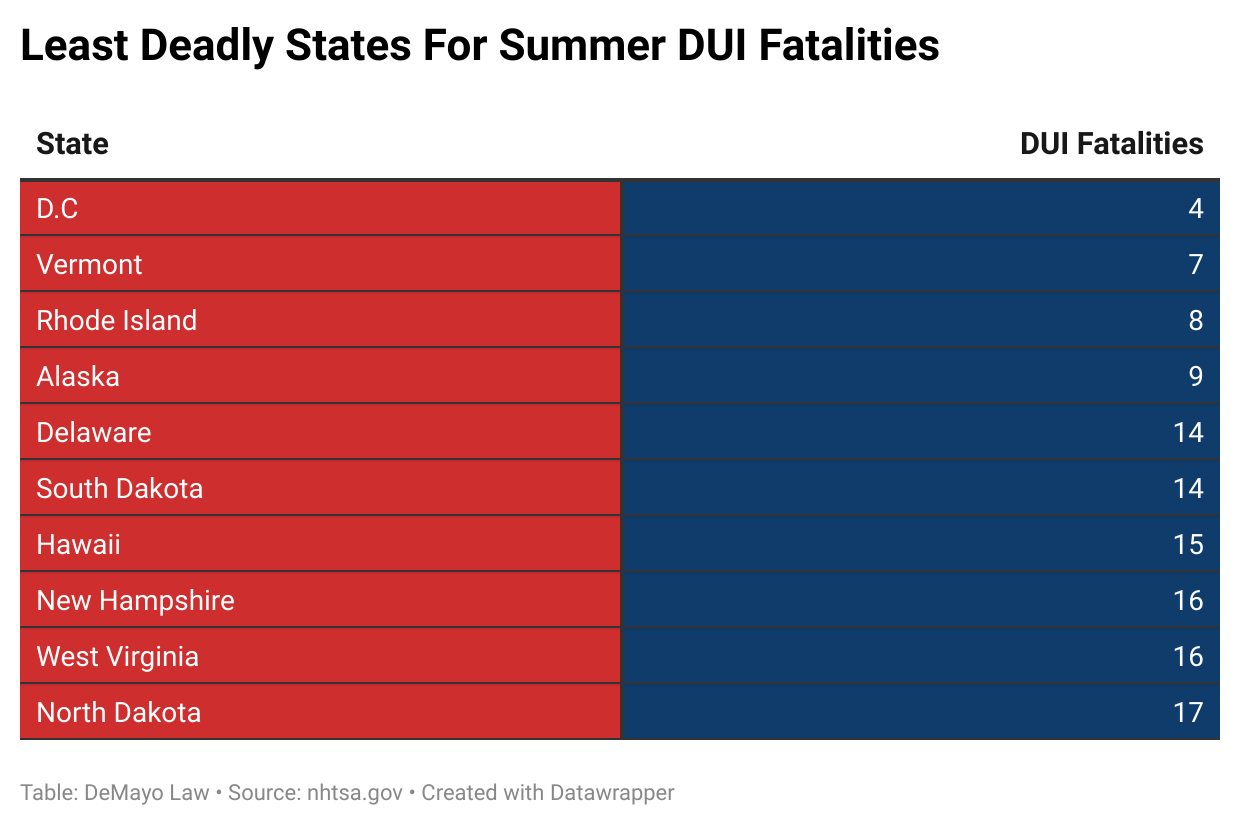
According to NHTSA data, and in keeping with accident and fatality trends, the South features more alcohol-related deaths (1,960) during the summer months than anywhere else – with Texas well clear as the main offending state, and four other states from the South comprising the top ten.
The West (1,075), driven by states California and Arizona, and the Midwest (977), mainly due to Ohio and Illinois numbers, are in second and third place for summer alcohol-related crash deaths, with the Northeast (548) much further back regarding drunk-driving deaths.
Such numbers offer compelling statistical proof that a volatile combination of glorious weather, vacation travel, unfocused and indulgent behavior, and a failure to heed potential dangers all help to create a deadly summer surge in drunk-driving disasters.
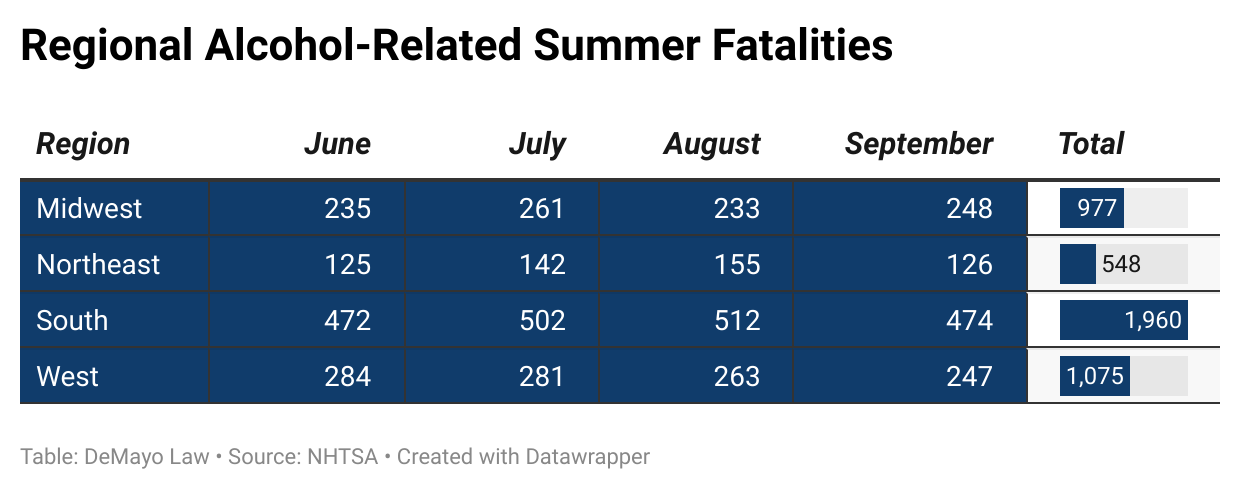
Overall annual drunk-driving statistics follow a similar pattern, with Texas featuring the most drunk-driving fatalities across the year (1,699) as well as the highest percentage of total car crash fatalities (40%).
California (1,355 drunk-driving fatalities; 33% of all crash fatalities) and Florida (839 drunk-driving fatalities; 25% of all crash fatalities) take second and third place on the list – mirroring the summer rankings.
The overall rankings for states with the least drunk-driving deaths across the year also closely resemble the summer list. D.C. (14 drunk-driving deaths; 32% of all crash deaths), Alaska (fourth on the summer list but second overall with 15 drunk-driving deaths, 25% of all crash fatalities), and Vermont (18 drunk-driving deaths, 26% of all crash deaths) make up the top three.
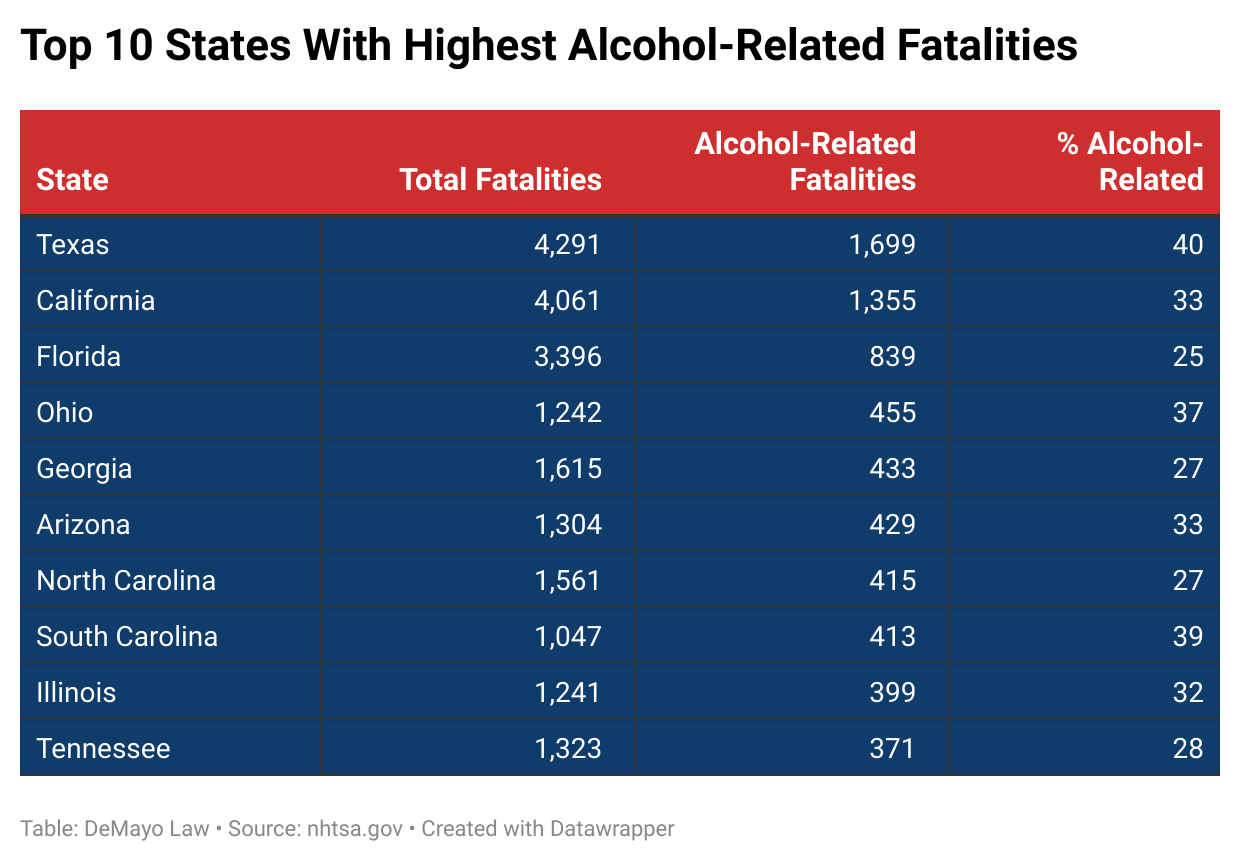
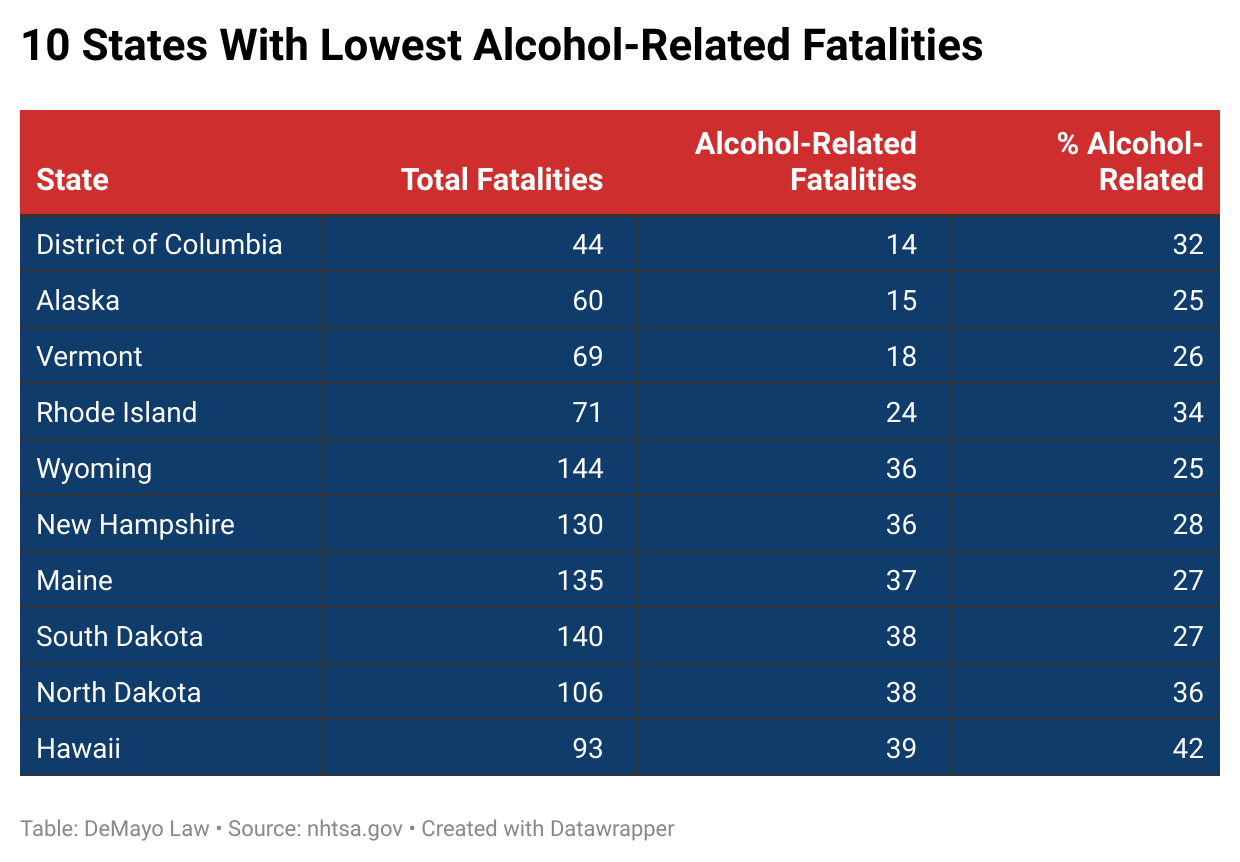
Summer: a Volatile Cocktail of Contributory Factors
All seasons offer a challenge to drivers. Winter (9,568 annual fatalities) and spring (9,898) pose distinct issues of their own, particularly the former, with black ice everywhere, and less vehicles, meaning less natural bottlenecks to limit traffic speed.
Fall (10,797) is even more dangerous, with several factors, including changeable weather, lower light levels, dazzle from low sun on wet roads, wet leaves on roads, increased animal activity, and roads rapidly becoming icier and more precarious.
Yet, as this study makes clear, summer is the most dangerous time to drive for several reasons. But it’s possible to take measures to improve summer road conditions.
Drivers need to do a much better job of staying hydrated – and avoiding any amount of alcohol before driving, particularly on long, grueling vacation trips. Drivers should also be much more mindful of car-related problems that hot weather can easily cause, with accidents all too often the result.
All experienced drivers should be well aware of the high number of inexperienced ‘just qualified’ drivers on the road during summer – particularly in the South – who will continue to pose a danger. Vacation travel need not end in disaster.
If you were involved in a personal injury – on the road or elsewhere – Demayo Law Offices can help. Get in touch with us today.
